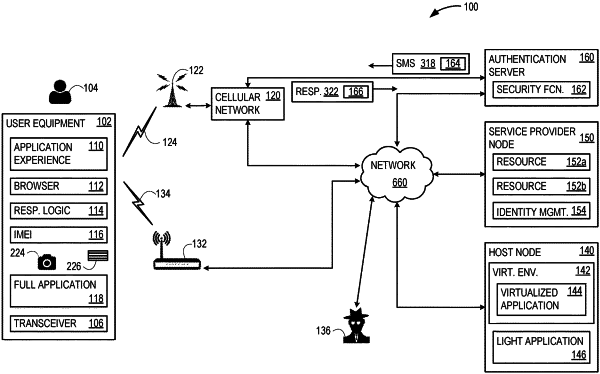| CPC G06F 21/44 (2013.01) [G06F 21/32 (2013.01); G06F 21/45 (2013.01); H04W 12/30 (2021.01); G06F 2221/2141 (2013.01)] | 20 Claims |

|
1. A method comprising:
receiving an indication of a user equipment (UE) attempting to login to a virtualized application executing on a host node that is separate and distinct from the UE, the virtualized application being a lightweight version of a full application adapted for execution on the UE, wherein the full application is configured to persistently store data for authenticating the UE on the UE, and wherein the virtualized application is unable to persistently store the data for authenticating the UE on the UE;
in response to the UE attempting to login to the virtualized application executing on the host node, transmitting a short message service (SMS) message to the UE, the SMS message indicating an authentication code;
receiving an indication of the UE having received the authentication code;
based on at least determining that the indication of the UE having received the authentication code is valid, controlling the virtualized application to accept user credentials; and
based on at least determining that the user credentials are valid, granting the virtualized application access to a controlled resource.
|